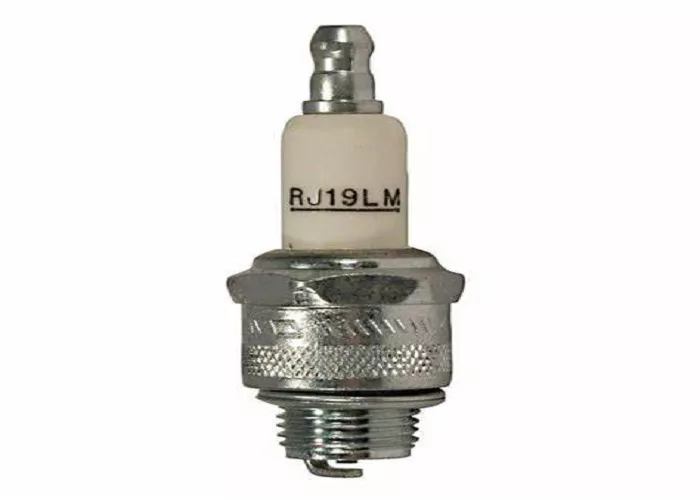A spark plug is a small but crucial component in a lawn mower’s engine. It ignites the air-fuel mixture, ensuring smooth operation. Selecting the correct spark plug improves performance, fuel efficiency, and engine longevity. However, with various types available, choosing the right one can be confusing.
Types of Spark Plugs for Lawn Mowers
Copper Core Spark Plugs
Construction
Nickel alloy electrode with a copper core.
Pros
- Affordable
- Good conductivity
- Reliable performance
Cons
- Shorter lifespan (about 20-30 hours)
- Requires frequent replacement
Iridium Spark Plugs
Construction
Fine iridium tip for better spark efficiency.
Pros
- Longer lifespan (up to 200+ hours)
- Better fuel efficiency
- Stronger spark
Cons
More expensive
Platinum Spark Plugs
Construction
Platinum-coated electrode for durability.
Pros
- Longer life than copper (about 100 hours)
- Resistant to corrosion
Cons
More costly than copper
Which One Should You Choose?
Budget-friendly option: Copper
Balanced performance & durability: Platinum
Premium performance & longevity: Iridium
Key Factors in Choosing a Spark Plug
Heat Range
Hot plugs: Stay hotter, ideal for low-RPM engines.
Cold plugs: Dissipate heat faster, suited for high-RPM engines.
Thread Size & Reach
Thread diameter: Common sizes are 10mm, 12mm, and 14mm.
Reach (thread length): Must match the engine’s cylinder head depth.
Electrode Gap
- The distance between the center and ground electrode.
- An incorrect gap affects ignition efficiency.
Resistor vs. Non-Resistor Plugs
Resistor plugs: Reduce electromagnetic interference (better for modern mowers).
Non-resistor plugs: Used in older models.
How to Read Spark Plug Codes
Example: NGK BPR6ES
- B: Thread diameter (14mm)
- P: Insulator design (projected tip)
- R: Resistor type
- 6: Heat range (medium)
- E: Thread reach (19mm)
- S: Standard electrode
Always cross-check with your mower’s manual for compatibility.
Signs of a Failing Spark Plug
Watch for these symptoms
- Hard starting (engine cranks but won’t start)
- Rough idling (uneven engine sound)
- Misfires (engine sputters under load)
- Increased fuel consumption
- Black, oily, or damaged electrode (visible upon inspection)
If you notice these, replace the spark plug immediately.
Step-by-Step Replacement Guide
Tools Needed
- New spark plug (correct model)
- Spark plug socket wrench
- Gap tool (if adjustment needed)
Steps
- Disconnect the spark plug wire (prevents accidental starts).
- Clean around the spark plug (avoid debris falling into the cylinder).
- Remove the old plug (turn counterclockwise).
- Check the gap on the new plug and adjust if necessary.
- Install the new plug (hand-tighten first, then torque to spec).
- Reconnect the spark plug wire.
Maintenance Tips for Longer Lifespan
- Inspect every 25 hours of use.
- Clean deposits with a wire brush if reusing.
- Check the gap periodically.
- Avoid over-tightening (can damage threads).
- Use fuel stabilizer to prevent carbon buildup.
Conclusion
Choosing the right spark plug ensures your lawn mower runs efficiently and lasts longer. Copper plugs are budget-friendly, platinum offers balance, and iridium provides premium performance. Always check heat range, gap, and compatibility before purchasing. Regular inspection and replacement prevent engine issues.
By following this guide, you can confidently select and maintain the best spark plug for your lawn mower, ensuring peak performance every mowing season.

